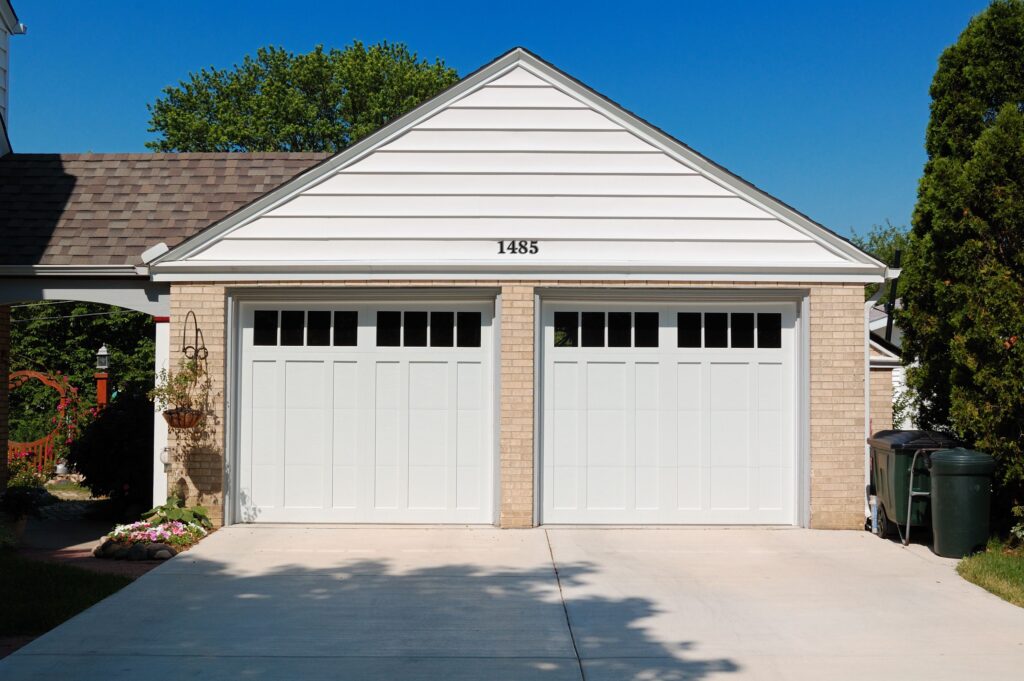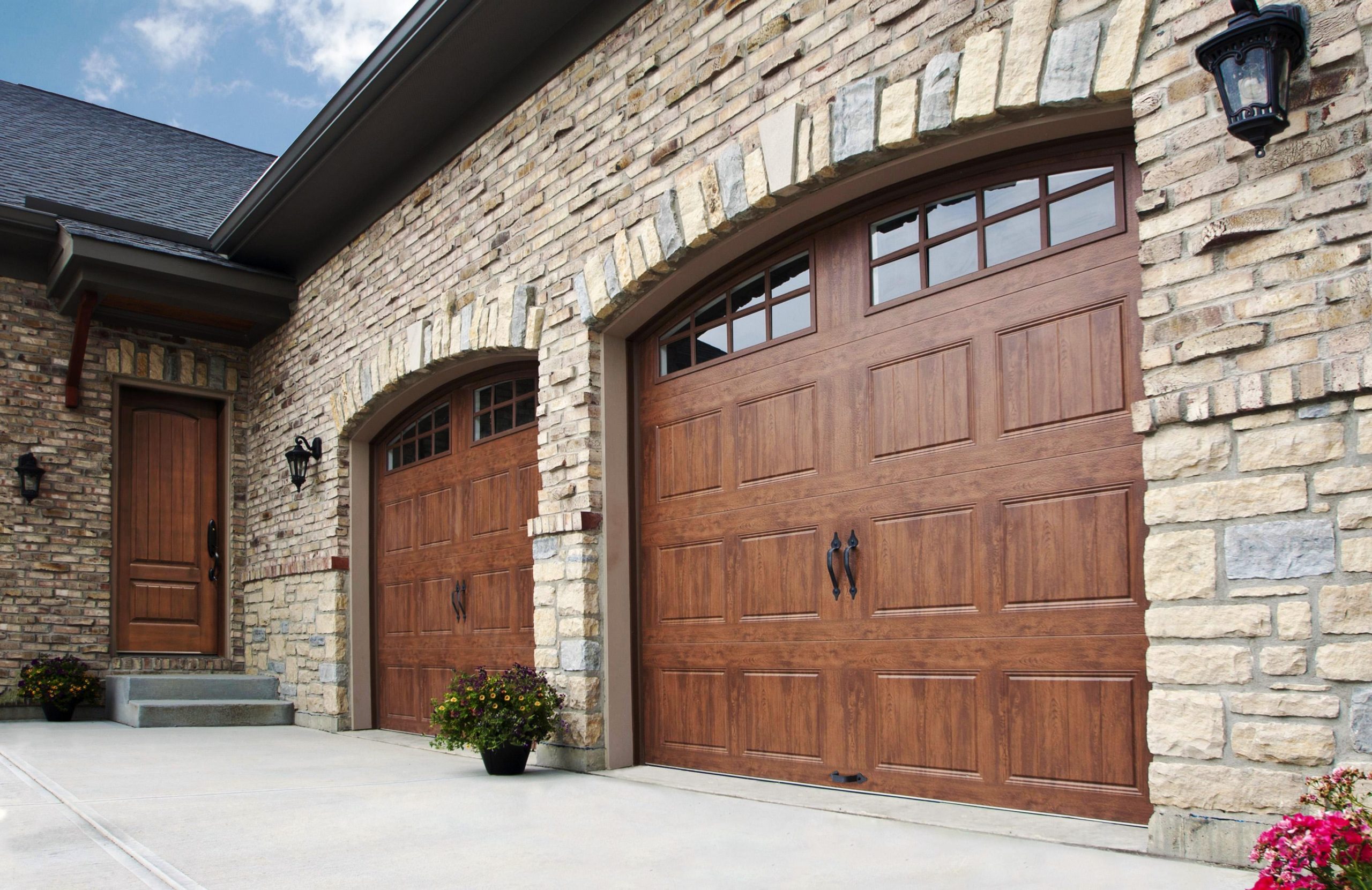Introduction
Garage doors are an essential part of many homes, providing security and convenience while also enhancing curb appeal. However, like any mechanical system, garage doors can encounter a variety of issues over time. Regular maintenance can help you avoid costly repairs and extend the life of your door. In this article, we’ll discuss common garage door problems, how to diagnose them, and provide some DIY maintenance tips to keep your garage door functioning smoothly.

Common Garage Door Problems
- Door Won’t Open or Close
- Symptoms: The garage door remains stationary despite pressing the remote or wall switch.
- Diagnosis:
- Check the Power: Ensure that the opener is plugged in and that there are no blown fuses or tripped circuit breakers.
- Inspect the Remote and Wall Switch: Test the remote batteries or use the wall switch to determine if the issue is with the remote.
- Check for Blockages: Ensure there are no obstructions in the door’s path that might prevent it from moving.
- Garage Door Opens or Closes Partially
- Symptoms: The door only opens or closes partway and then reverses direction.
- Diagnosis:
- Photo Eye Alignment: Ensure the safety sensors (photo eyes) are properly aligned and not blocked by dirt or debris.
- Adjust Limit Settings: Consult your garage door opener manual to adjust the limit settings to allow the door to open and close fully.
- Inspect Tracks: Check the tracks for any bends or obstructions that could hinder movement.
- Noisy Operation
- Symptoms: The garage door produces loud grinding, squeaking, or rattling sounds during operation.
- Diagnosis:
- Lubrication: Lack of lubrication on rollers, hinges, and springs can cause noise. Inspect and lubricate these parts with a silicone-based lubricant.
- Worn Rollers: Check the rollers for signs of wear or damage. Replace them if necessary.
- Loose Hardware: Tighten any loose bolts or screws on the door and tracks to eliminate rattling sounds.
- Door Gets Stuck
- Symptoms: The garage door stops moving at certain points and requires manual assistance to continue.
- Diagnosis:
- Check Tracks: Inspect the tracks for debris, bends, or misalignment that may be causing the door to stick.
- Roller Condition: Worn or damaged rollers can hinder movement. Replace any defective rollers.
- Lubrication: Ensure that all moving parts are well-lubricated to facilitate smooth operation.
- Garage Door Reverses Before Hitting the Ground
- Symptoms: The door closes partially and then reverses back up without hitting the ground.
- Diagnosis:
- Test the Force Settings: Most openers have adjustable force settings. Consult the manual to adjust them accordingly.
- Photo Eye Functionality: Ensure the safety sensors are working correctly. If they are misaligned or obstructed, the door may reverse.
- Inspect the Tracks: Make sure there are no obstructions that could trigger the safety mechanism.
- Remote Control Malfunctions
- Symptoms: The remote fails to operate the garage door consistently.
- Diagnosis:
- Battery Check: Replace the batteries in the remote to see if this resolves the issue.
- Signal Interference: Ensure there are no objects obstructing the signal between the remote and the opener.
- Reprogram the Remote: Consult the owner’s manual on how to reprogram your remote if it continues to malfunction.
- Sagging Garage Door
- Symptoms: The door appears uneven or sagging in the middle.
- Diagnosis:
- Check for Broken Springs: A broken spring can cause the door to sag. Inspect the springs for any visible signs of damage.
- Hinge Condition: Worn hinges can also contribute to sagging. Inspect and replace any defective hinges.
- Weather Stripping: Ensure that the weather stripping is intact, as damaged weather stripping can create an uneven appearance.
DIY Maintenance Tips
- Regular Inspection
- Conduct a visual inspection of your garage door at least once a month. Look for signs of wear, damage, or misalignment. Catching problems early can prevent more extensive damage.
- Lubrication
- Lubricate moving parts such as rollers, hinges, tracks, and springs every six months. Use a silicone-based lubricant to ensure smooth operation and to reduce friction.
- Cleaning
- Keep the tracks clean and free of debris. Use a damp cloth to wipe down the tracks and rollers, removing any dirt or grime that may accumulate.
- Adjusting the Garage Door Opener
- Familiarize yourself with the limit settings and force adjustments of your garage door opener. Regularly check these settings to ensure proper door operation.
- Test Safety Features
- Regularly test the safety features of your garage door, including the auto-reverse function and photo eye sensors. Place an object in the door’s path to ensure it reverses when it encounters an obstruction.
- Check the Weather Stripping
- Inspect the weather stripping around the door for any damage or wear. Replacing worn weather stripping can improve insulation and keep out drafts.
- Tighten Hardware
- Periodically check and tighten any loose bolts, screws, or hardware on the garage door and opener. This will prevent rattling and maintain stability.
- Replace Worn Parts
- If you notice any worn or damaged components, such as rollers, springs, or cables, replace them immediately. This will prevent further damage to the door and ensure safe operation.
- Seek Professional Help When Needed
- While many garage door issues can be diagnosed and fixed with DIY methods, some problems may require professional assistance. If you’re unsure about a repair or lack the necessary tools, it’s best to consult a professional technician.

Conclusion
Regular maintenance and early diagnosis of common garage door problems can save you time, money, and frustration. By being proactive in your garage door care, you can ensure it operates smoothly and efficiently for years to come. Whether you’re dealing with a stubborn door that won’t open or a noisy opener, understanding these issues and their solutions can empower you to tackle maintenance tasks with confidence. Remember, if you’re ever in doubt about a repair, don’t hesitate to reach out to a professional for help. Keeping your garage door in top condition not only enhances the functionality of your home but also contributes to its overall safety and security.


